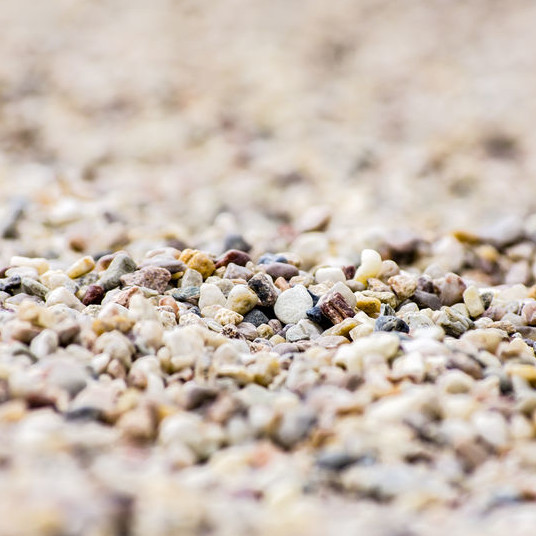
Physical Foreign Materials
What are Physical Foreign Materials?
A physical foreign material is anything that does not belong in the food product. These substances can be classified as food safety hazards or quality and consumer complaint issues.1
Some examples of physical foreign materials are:
- Stones
- Metals
- Brittle plastics
- Wood
Origin
Food consumption patterns have migrated from locally sourcing to long-distance transportation of products. In the early 1920s, a stem found in a can of green beans would have been tossed aside without any thought to food safety.[2] Fast-forward to the mechanization of food, and foreign materials such as glass, wood, metal, and rubber pose greater risks to consumers.
As a result, the FDA established Good Manufacturing Practices to deal with physical foreign materials.
Section 110.80(b)(8) of the GMP states:2
Effective measures shall be taken to protect against the inclusion of metal or other extraneous materials in food. Compliance with this requirement may be accomplished by using sieves, traps, magnets, electronic metal detectors, or other effective means.
The United States Department of Agriculture Food Safety and Inspection Service defines foreign materials as non-animal objects such as metal, plastic, rubber, glass, wood, steel, or lead shot.2
Regulatory compliance
Physical foreign materials in food may pose a health or safety risk to consumers. Requirements for regulating physical foreign materials and Good Manufacturing Practices are outlined under FDA 21 CFR Part 117 Sec. 117.130 Hazard analysis.3 They are seen as a lower risk and can be controlled through metal detectors and supplier approval programs as part of a robust Hazard Analysis and Critical Control Points (HACCP) plan.
Application – how to create a physical foreign material program
Several critical steps are involved in establishing a physical foreign material control program:1
Visual inspection of shipping and receiving vehicles to ensure ingredients and raw materials are free from contamination when they arrive at the manufacturing facility. Inspection should include transportation vehicles such as trailers, rail cars, trucks, and shipping containers. By establishing a supplier approval process, the risk of receiving contaminated shipments will be reduced. Designated employees should be trained to conduct the visual inspections. Some suggested tools for conducting inspections are:1
- Flashlight
- Inspection mirror
- Thermometer
- Scraper
- Digital camera
Sampling and examination of ingredients and raw materials. Quality control should collect samples from ingredients such as bulk flour, sugar, and salt. Samples can be processed through sifters or physically sorted to detect foreign materials. Magnets can be used to identify any items containing iron. Common physical foreign materials found during the visual examination are insects, rodent excreta, hairs, glass, rocks, plastic, and rubber.
- Glass, Brittle Plastics and Ceramics (GBPC) Program. A GBPC program is used to eliminate all non-essential GBPC from the food facility. Procedures for cleaning up any breakage should be implemented. Common sources of GBPC are overhead lights, windows, coffee mugs, eyeglasses, and gauge covers.
- Metal-to-metal program. This program is necessary due to the use of metal equipment in the food industry. Faulty or old equipment may put food products at risk for contamination. Metal detectors or metal screens with magnetic properties should be used to detect any physical foreign materials.
- Wood control program. Wooden pallets are declining in use in food manufacturing facilities. Pallets composed of alternative materials are available. Wood pallets can easily deteriorate over time due to moisture and cracking. This leads to splintering and wood shards, which become a concern in food items. A program that monitors the condition of wooden pallets should be put in place.
When a physical foreign material program is established, several control devices can be installed in key locations. The following devices are commonly used in bakeries:4
Metal detector devices are located in finished product packaging areas. Other useful areas to consider are locations that receive bulk materials or those that are adjacent to sensitive equipment. A program should be established for trained employees to test the metal detector at the startup of every production run. Most metal detectors have a reject mechanism that will remove the specific unit from the production line. The rejected units should be thoroughly inspected for foreign material, properly documented, and corrective action taken.
Magnets respond to ferrous metals and will not capture non-ferrous metals. The more buildup on a magnet, the less effective it becomes. Check magnets for weakness at least annually. Magnets are used to inspect both incoming ingredients and raw materials.
Sifters are used for dry-milled or powdered ingredients. Sifter screens of 30 mesh (30 wires per inch) are normally used for finely milled products such as flour. The raw ingredients are loaded into the sifter before being used in production. The sifter collects foreign materials and sorts them into a tailings container. Tailings should be inspected no less than daily and the results documented. Sifters should be disassembled weekly for cleaning and for inspection of the screens.
X-ray units are used to identify objects other than metal in food products. Materials such as glass, stones, plastic, and metals can be identified using X-ray inspections. The unit is set up inline, providing an ongoing quality check. X-ray systems can also measure mass, count components, monitor seal integrity, or check for damaged packaging.
References
- AIB International. “Food Safety and Sanitation.” Food Safety and Sanitation Distance Learning Course, Chapter 12.
- Peariso, D. Preventing Foreign Material Contamination of Foods, 1st ed. Blackwell, 2006. pp 1–13.
- U.S. Food and Drug Administration. “21 CFR 117 – Current Good Manufacturing Practice, Hazard Analysis, and Risk-based Preventive Controls for Human Food.” 1 Apr. 2017. https://www.accessdata.fda.gov/scripts/cdrh/cfdocs/cfcfr/CFRSearch.cfm?fr=117.130.
- AIB International “Tip of the Week: Keeping Foreign Material Out of Consumer Products.” AIB International, 2 June 2017. http://www.aibonline.org/Food-First-Blog/PostId/244/tip-of-the-week-keeping-foreign-material-out-of-consumer-products

